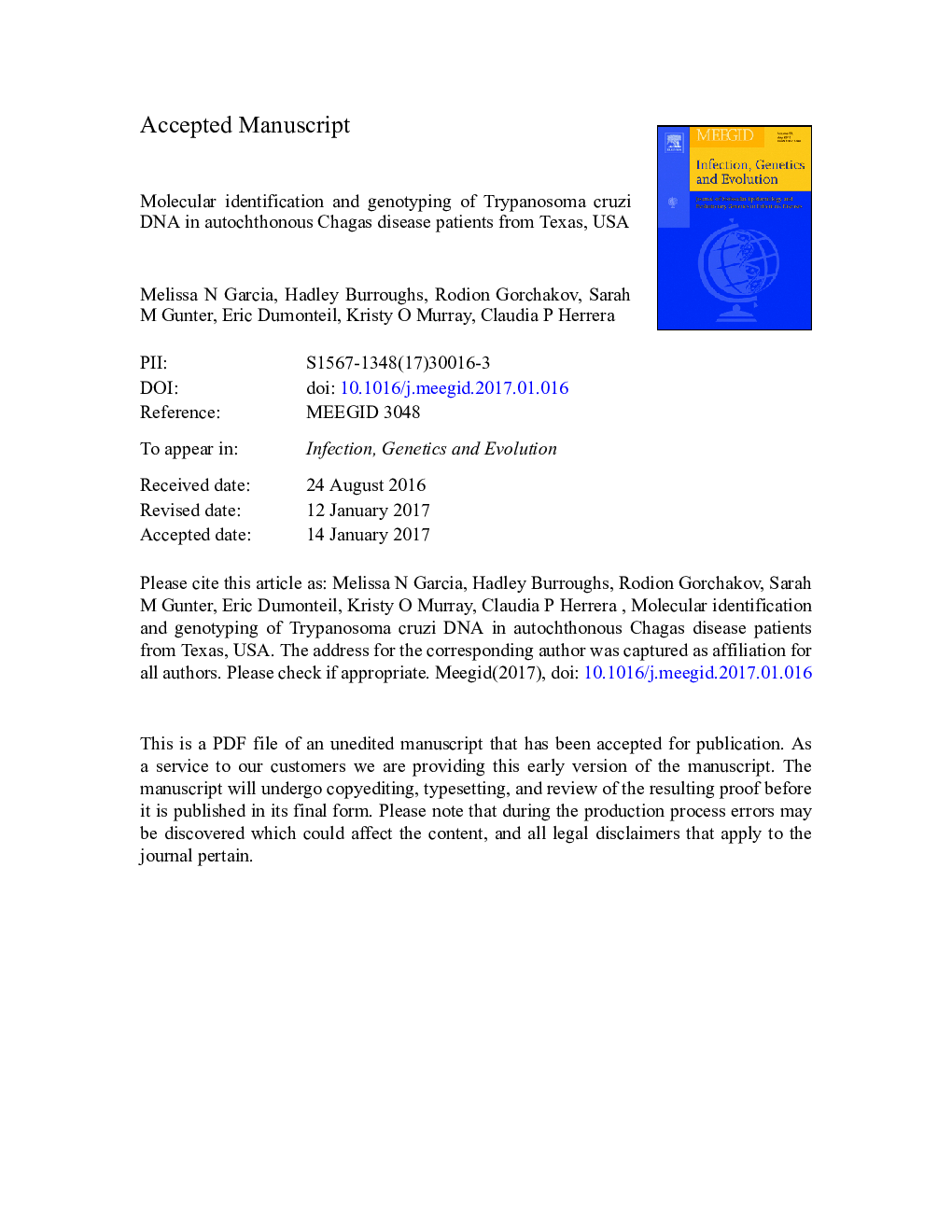| Article ID | Journal | Published Year | Pages | File Type |
|---|---|---|---|---|
| 5590641 | Infection, Genetics and Evolution | 2017 | 26 Pages |
Abstract
The parasitic protozoan Trypanosoma cruzi, the causative agent of Chagas disease, is widely distributed throughout the Americas, from the southern United States (US) to northern Argentina, and infects at least 6 million people in endemic areas. Much remains unknown about the dynamics of T. cruzi transmission among mammals and triatomine vectors in sylvatic and peridomestic eco-epidemiological cycles, as well as of the risk of transmission to humans in the US. Identification of T. cruzi DTUs among locally-acquired cases is necessary for enhancing our diagnostic and clinical prognostic capacities, as well as to understand parasite transmission cycles. Blood samples from a cohort of 15 confirmed locally-acquired Chagas disease patients from Texas were used for genotyping T. cruzi. Conventional PCR using primers specific for the minicircle variable region of the kinetoplastid DNA (kDNA) and the highly repetitive genomic satellite DNA (satDNA) confirmed the presence of T. cruzi in 12/15 patients. Genotyping was based on the amplification of the intergenic region of the miniexon gene of T. cruzi and sequencing. Sequences were analyzed by BLAST and phylogenetic analysis by Maximum Likelihood method allowed the identification of non-TcI DTUs infection in six patients, which corresponded to DTUs TcII, TcV or TcVI, but not to TcIII or TcIV. Two of these six patients were also infected with a TcI DTU, indicating mixed infections in those individuals. Electrocardiographic abnormalities were seen among patients with single non-TcI and mixed infections of non-TcI and TcI DTUs. Our results indicate a greater diversity of T. cruzi DTUs circulating among autochthonous human Chagas disease cases in the southern US, including for the first time DTUs from the TcII-TcV-TcVI group. Furthermore, the DTUs infecting human patients in the US are capable of causing Chagasic cardiac disease, highlighting the importance of parasite detection in the population.
Keywords
Related Topics
Life Sciences
Agricultural and Biological Sciences
Ecology, Evolution, Behavior and Systematics
Authors
Melissa N Garcia, Hadley Burroughs, Rodion Gorchakov, Sarah M Gunter, Eric Dumonteil, Kristy O Murray, Claudia P Herrera,
